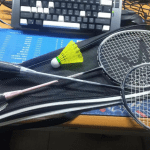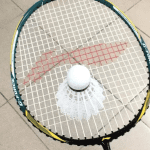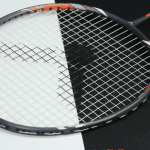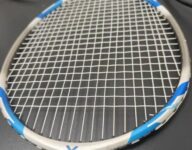
Badminton Racket Victor METEOR X 7000 Reviews
This should be a low-end MX model that stands out among shorter players.
However, based on my inference from the MX260 review, the MX7000 is likely also a soft model. This is supported by information from the Zhongyu Equipment Library. The stiffness decreases from MX6000 to MX7000, similar to the change from MX80 to MX90. Additionally, low-end rackets rarely feature an 80-hole string bed. It’s not about the cost of adding more holes but rather that an 80-hole string bed requires higher demands on the frame’s structure and materials, making it better to use a 72-hole design.
Specifications:
Weight: 4U G5, no grip, total weight when in use: 85.30g, balance point: 313mm, 7.2mm shaft, shaft length: 220mm, stiffness: low.
Frame: octagonal aerodynamic frame, 72-hole string bed, grooves at 9-3 points.
String tension: 24 lbs recommended, strung at 24 lbs with Li Ning N9.
The color scheme is similar to the NR750 I mentioned earlier but is actually traced back to the blue, silver, and gray of the MX70. The two-tone gray and four-tone blue give the racket a centralized visual effect. The amount of stickers is considerable, the shaft is relatively plain, and there are no striking technological applications. It has the typical appearance style of a low-end racket. Compared to the previous Yu 09 I used, it’s much better, but the MX6000’s black base still makes me prefer it.

After removing the grip, the head-heavy feel of the racket is quite noticeable. The high balance point makes the swing weight slightly excessive for a 4U racket. Handling active shots at the handle position is not problematic, and the head-heavy feel allows you to generate noticeable shaft deformation and shot power when swinging the head. It’s a racket capable of producing powerful shots, but it does require a significant amount of physical exertion. After about 30 high clears, I started to feel soreness.
Therefore, I’ll directly address the racket’s attacking capabilities. Honestly, the MX7000’s smashing feel is outstanding among entry-level products. It delivers a robust and powerful hit, and with better strings, achieving a powerful smash is not too difficult.
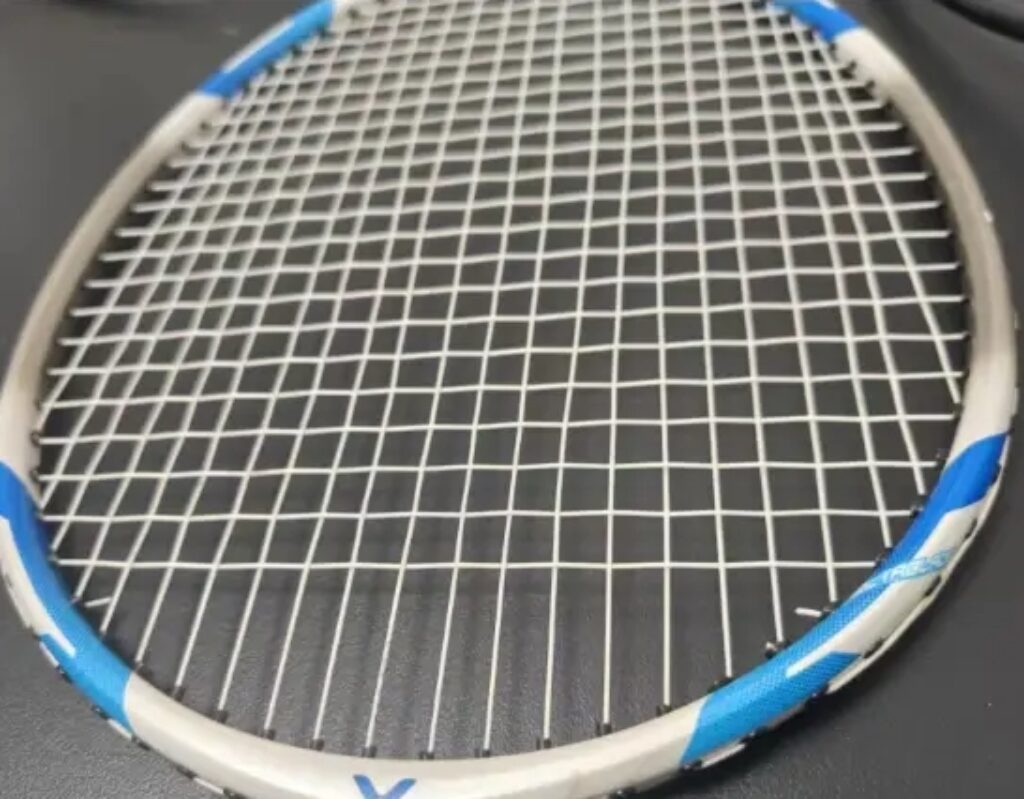
However, its sacrificed consistency and endurance are quite noticeable, especially the former. The MX80 balances both drives and smashes well, whereas the MX7000, being two levels lower, uses high swing weight to achieve shot power, which affects the follow-up shots. Long preparation time, prolonged deceleration after swinging, and higher loads on the forearm and wrist make it uncomfortable in drives and blocks, and these shortcomings are amplified by the subpar strings. In the mid-court and front-court, its down-smashing becomes more coherent with improved swing speed.
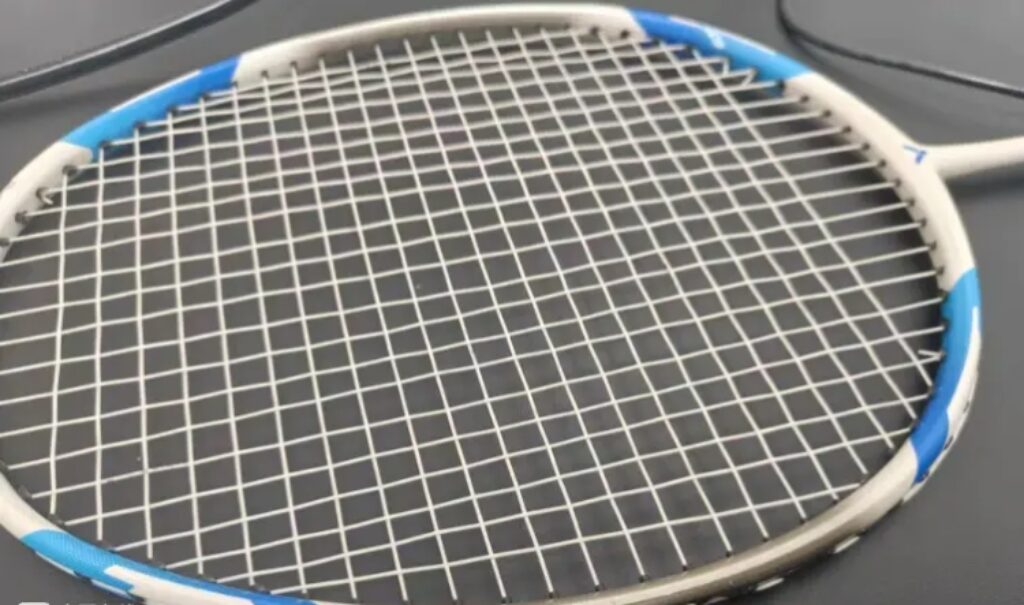
The racket’s head and sweet spot areas are moderate, and the 72-hole string bed provides a stronger hold compared to the 80-hole version. Thus, the MX7000 offers better control over small shots and a good margin of error for rear-court lifts.
In passive situations, it relies more on personal skill. It’s not that the MX7000 needs exceptional power techniques; the shaft is actually quite friendly. The high swing weight remains a challenging aspect. In fast-paced rallies where you are stretched from side to side, you need core stability to handle both forehand diagonal drives and backhand clears. Relying only on your upper arm won’t suffice.
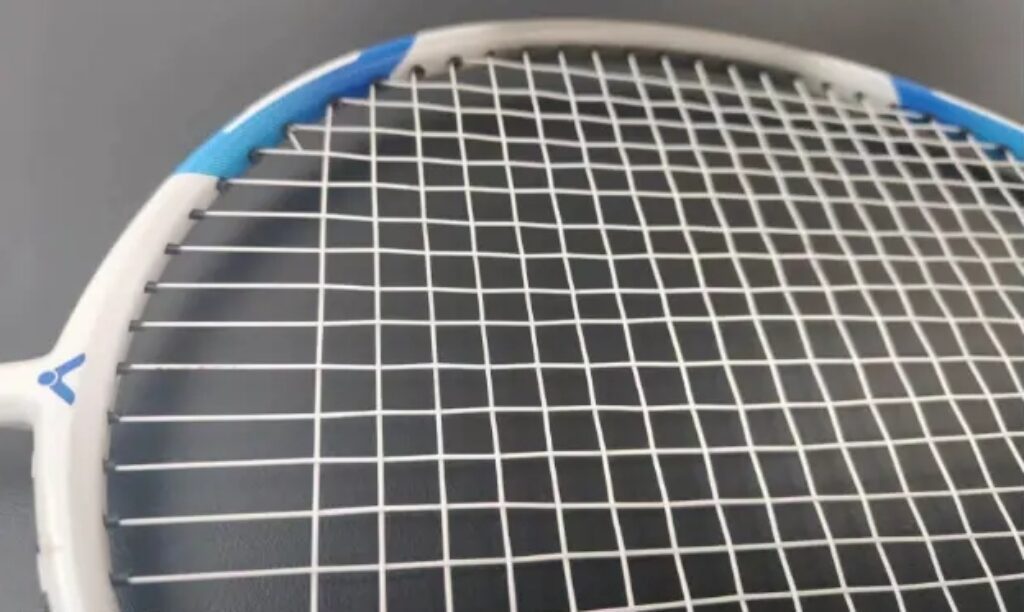
This racket has a head-heavy feel similar to the MX70, and it’s an older entry-level model with its own strengths and characteristics.

